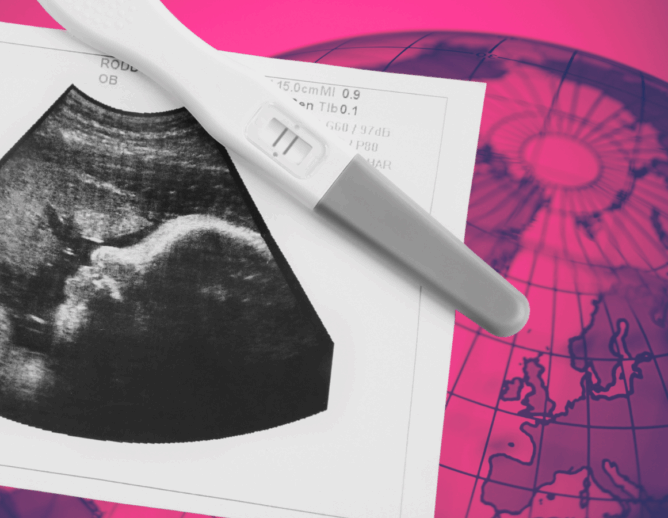Rationing critical medical care is one of the most uncomfortable topics related to COVID-19 and human rights. The focus of this post is not on the imperative need that States – individually and collectively considered – devote all their efforts to avoid rationing critical care, which must be considered an extreme and last resort measure.
Parallel to preventive efforts, States must anticipate the tragic scenario that is rationing critical care. That assessment calls for clear and transparent information on current (and projected) availability of goods and services for critical care. The fact that some countries are issuing public statements about “flattening the curve” does not justify casting this urgent debate. In some countries, such public statements are not the result of massive testing, and in others such statements have been made without careful consideration of the rural areas where Covid-19 may be spreading silently. There is also uncertainty on the impact that the flexibilization of lockdowns and the reactivation of the economy will have in the spread.
Two main questions arise: 1. Who needs to make these decisions and with what safeguards? and 2. What are the ethical and legal considerations for the definition of the criteria? Although there are no absolute answers, public health, bioethical and human rights principles give us both guidance and limits.
1. Who needs to make these decisions and which are the necessary safeguards?
The experience at the global level exemplifies one of significant confusion.
In Italy, when scarcity resources at Intensive Care Units (ICU’s) and ventilators became public knowledge, the Italian College of Anesthesia, Analgesia, Resuscitation and Intensive Care (SIAARTI) published guidelines for allocation that were followed by a public statement of the National Federation of Orders of Surgeons and Dentists. A similar situation took place in Spain. The Spanish Society of Intensive and Critical Medicine and Coronary Units (SEMICYUC) published a document that was criticized by the Spanish Committee of Bioethics. It seems that only the health authority of the Autonomous Community of Catalonia issued guidelines. In the United States, a group of States – through their public health authorities – have issued some guidelines; while academic institutions and some hospitals have published documents as well. In Latin America, guidance was published in Chile by the Ministry of Health. In Mexico, the Council of General Health, dependent from the Secretary of Health, issued a draft that was criticized by national human rights institutions.
These examples show a variety of sources for the guidelines: medical associations, bioethics committees, the hospitals themselves, academic papers and public health authorities. This variety is relevant for the public debate, but there needs to be clarity on who must ultimately adopt the criteria. There are at least three reasons to hold that it must be a responsibility of States. One reason is that a pandemic is obviously a matter of public health and, therefore, the response to scarcity of medical resources, including the allocation criteria is a public matter. Secondly, the decision to deny critical care to a person in favor of granting it to another, besides being a matter of bioethics, is also a human rights matter and, therefore, the States have a primary role of guaranteeing that they these decisions are implemented within the confines of the relevant domestic and international human rights norms. The third reason is the imperative of avoiding unclear or scattered criteria in a public health emergency context.
It is crucial to underline the requirements of the adoption processes of these guidelines. These processes should be open, participative, informed by advisory committees with legitimacy in the relevant fields including bioethics, guided by the best available evidence, capable of taking into account the needs of each country and region and transparent. An important safeguard is to establish an accountability and permanent review mechanism in order to guarantee that the guidelines are in place only as a last resort measure, and within the limits of strict necessity. Thus, this calls for the active public information on the availability of critical care equipment in each region of the countries, in addition to the information of the spread of the virus. Compliance with these requirements contribute to social understanding and acceptance of these difficult decisions. The World Health Organization (WHO), the Pan American Health Organization (PAHO) and the Center for Disease Control and Prevention (CDC) have emphasized these safeguards on documents related to previous infectious outbreaks or when foreseeing a potential influenza pandemic.
2. What are the ethical and legal considerations for the definition of the criteria?
This is the most complex question, not only because of the nature of these decisions but because it is a topic where consensus is scarce, as the discrepancies described above in Italy, Spain and Mexico illustrate. Also, a number of academic papers, as well as previous documents from WHO, PAHO and CDC (quoted in the previous section), confirm the lack of consensus. Among the academic sources, a paper on Fair Allocation of Scarce Medical Resources in the Time of Covid-19 is a good example of the lack of unique responses. A Framework for Rationing Ventilators and Critical Care Beds During the COVID-19 Pandemic is another example.
However, there appears to be more consensus on some topics than on others. One is the need to prioritize the health care workers (provided that prioritization is not based on subjective considerations on the social worthiness of groups of people). Another is the need to include in allocation decisions all patients requiring critical care, and not only COVID-19 patients. There is also consensus on the need to provide palliative care to those patients that were not prioritized for critical care. Most of these points of consensus are reflected in the recent document issued by PAHO, Ethics Guidance for the use of scarce resources in the delivery of critical health care during the COVID-19 pandemic.
The question becomes complicated from a legal perspective, when the guidelines attempt to strike a balance between the principles of utility, fairness and priority to the worst off. Although there seems to be consensus on the consideration of the short-term prognosis, based on medical criteria, as a reason for allocation, this approach can be in tension with the principle of giving priority to the worst off. This tension has legal relevance – namely regarding the prohibition of discrimination – because the group of people that have the worst short-term prognosis, is likely to be in that situation as a result of the structural disadvantages related to the social determinants of health and the disparate prevalence of other health conditions that worsen their prognosis in the context of Covid-19. Consequently, the short-term prognosis, although seemingly neutral, brings its own burden of disproportionate impact on certain groups.
The suspicion of discrimination appears more explicit and direct in those guidelines recommending lists of a priori exclusionary criteria for intensive care. Some of these criteria amount to preventing the possibility of intensive care without individualized consideration of the short-term prognosis of the patient. That is the case of the consideration of criteria such as disabilities, age ranges or health status. From the perspective of the prohibition of discrimination, if short-term prognosis is the recommended criterion, the guidelines should, at least, provide that every patient have access to an individualized assessment of his/her short-term prognosis, and the consequent prohibition that age, disability or other personal conditions carry the implication of automatically excluding intensive care.
This may address the concern of direct discrimination in the clinical assessment of the short-term prognosis. However, disability, age or health status are included to assess also the long-term survival as criteria to break a “tie” between two individuals with similar short-term prognosis. The considerations behind these models of guidelines seem to be an interpretation of the principle of utility and maximizing benefits, as a mandate not only to save the maximum possible number of lives, but also to save the maximum numbers of years of life or life cycles, and even the best “quality of life” after short-time survival. These considerations open the door to judgments about which lives are inherently deemed less worthy.
Rationing critical care to a person using criteria such as disability, age or health status are, from the legal perspective, differential treatment based on categories specially protected by human rights norms in constitutional democracies and at the international level. Therefore, it is potential unlawful discrimination and, as such, rationing criteria must undergo a careful scrutiny – while its level of intensity may vary among different jurisdictions. In my opinion, some of the mentioned criteria could hardly pass a serious test of adjudication of the prohibition of discrimination. The warning of unlawful discrimination was made by the Independent UN Expert on the enjoyment of all human rights by older persons. A similar concern was made public by the UN Committee on the Rights of Persons with Disabilities in a joint statement with the Special Envoy of the United Nations Secretary-General on Disability and Accessibility and the Council of Europe Committee on Bioethics.
This post does not intend to define the criteria for allocation of intensive care in a context of scarcity, but to alert that there could be a strong tension with the prohibition of discrimination in the domestic and international jurisdictions. Such alerts are not exhaustive, but can at least provide some guidance on how, in the tragedy of a rationing last resort scenario, some models are less unfair than others. Such debates need to be carefully considered by the public health authorities by means of adequate and legitimate processes.



